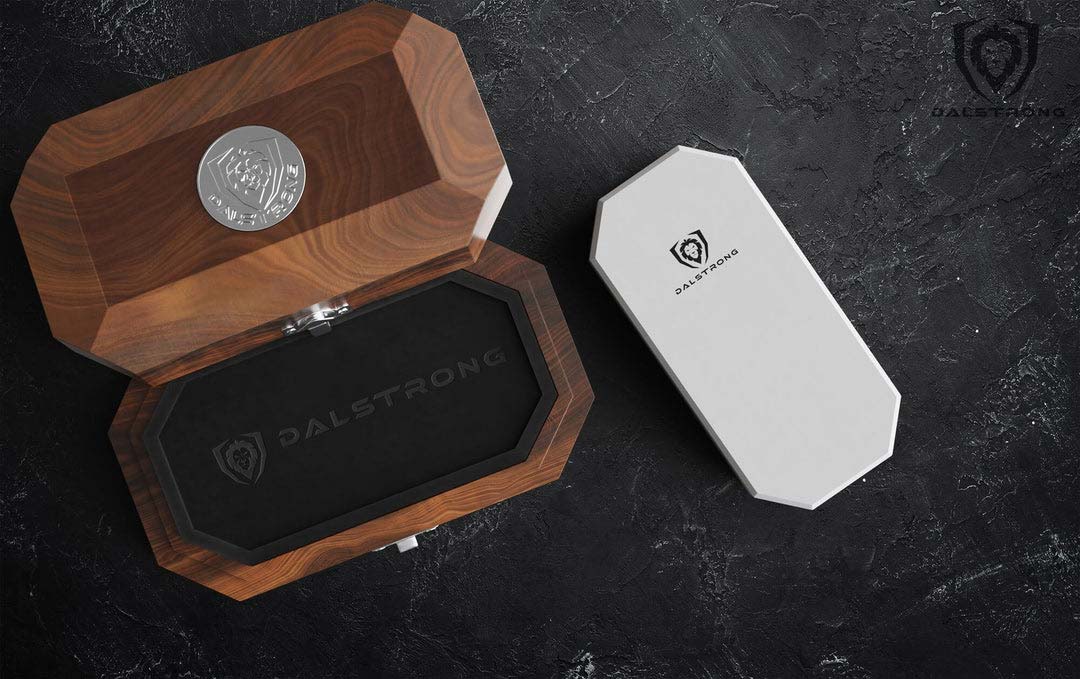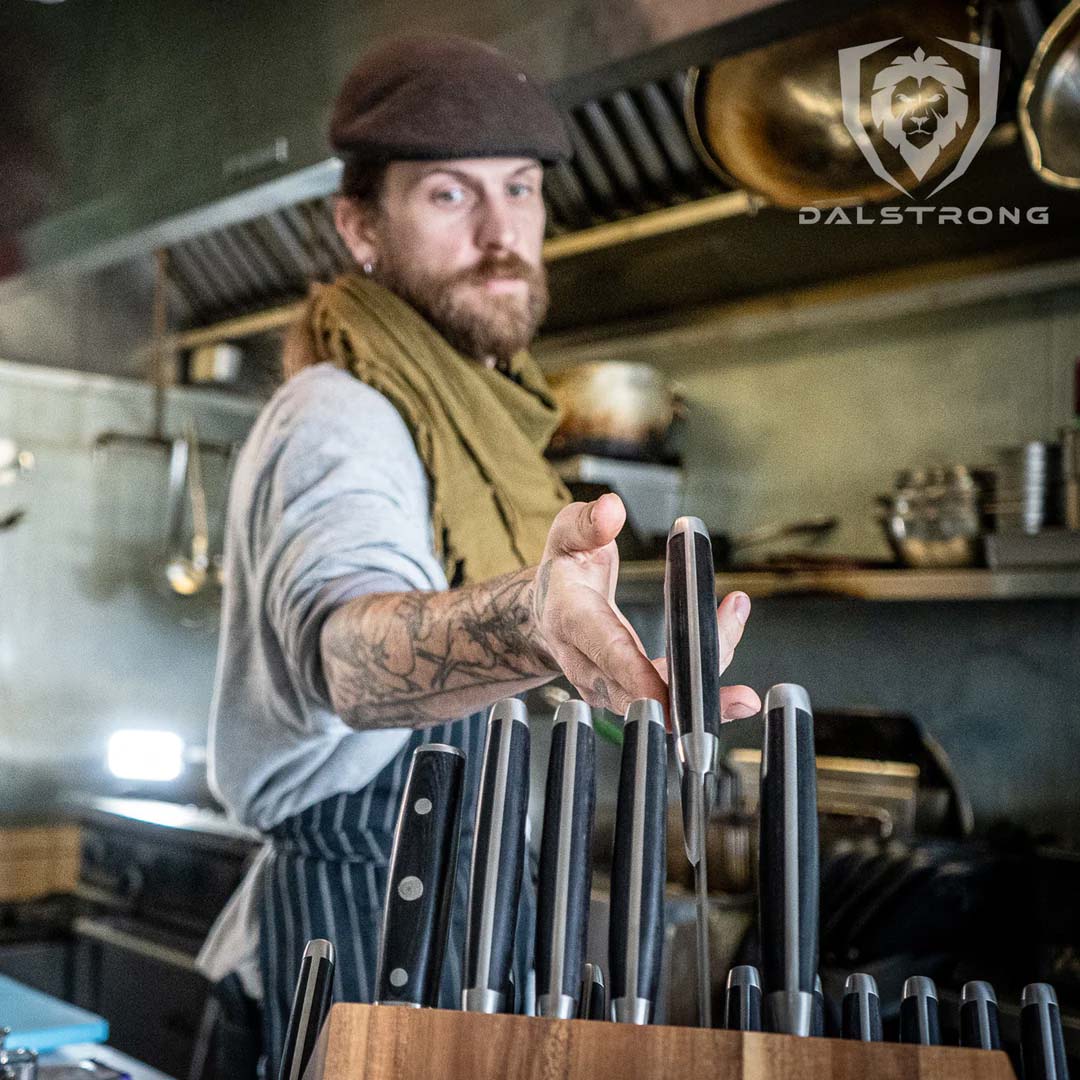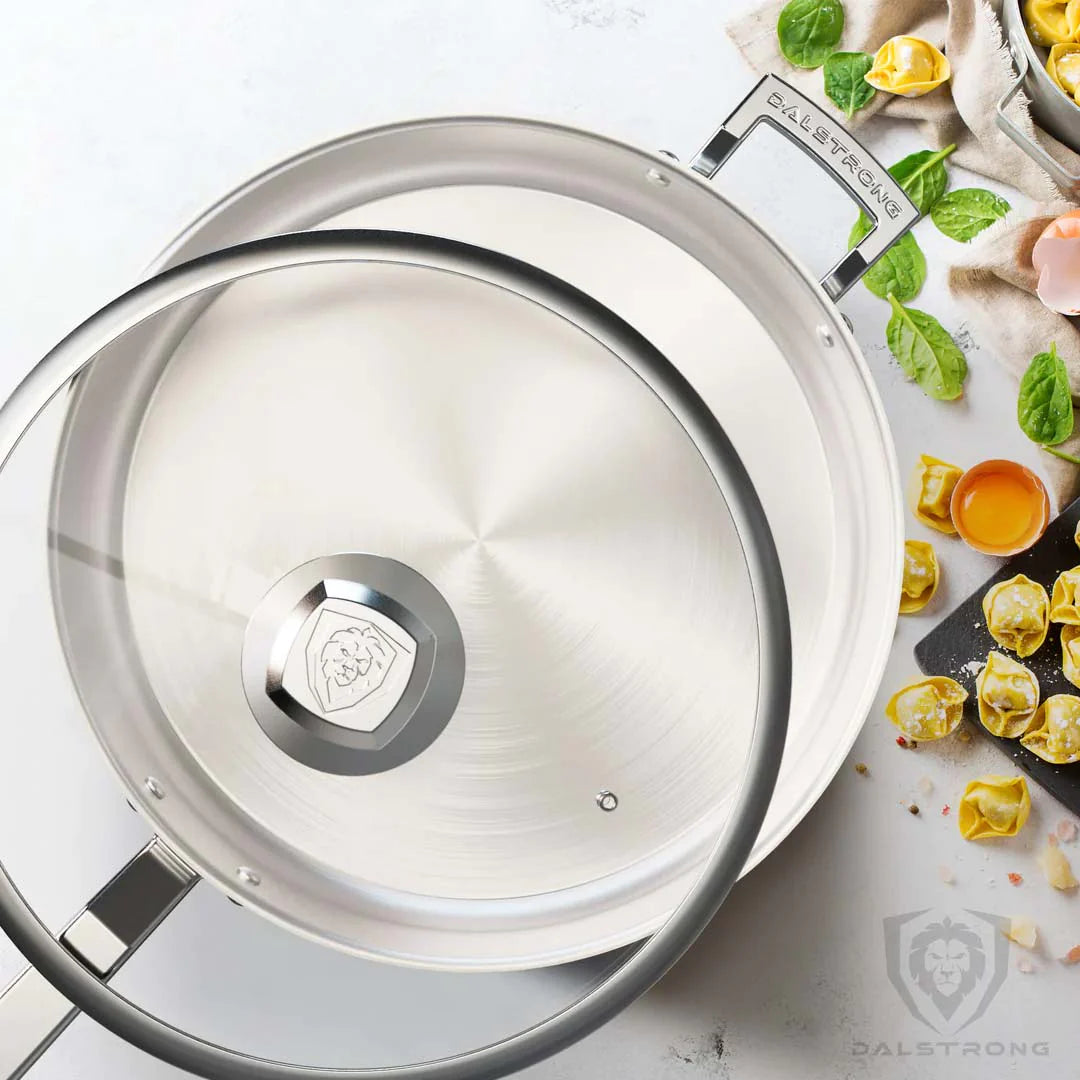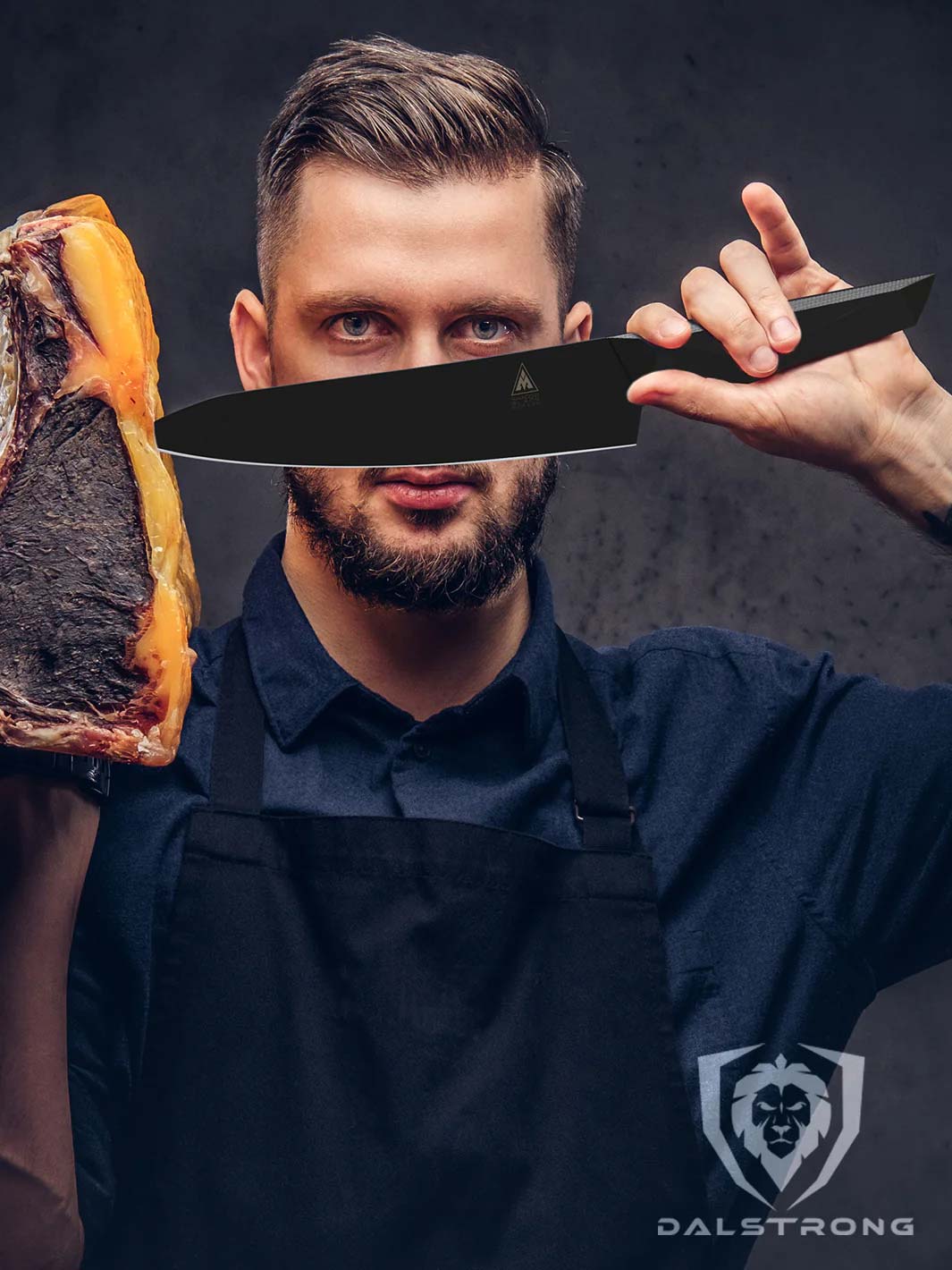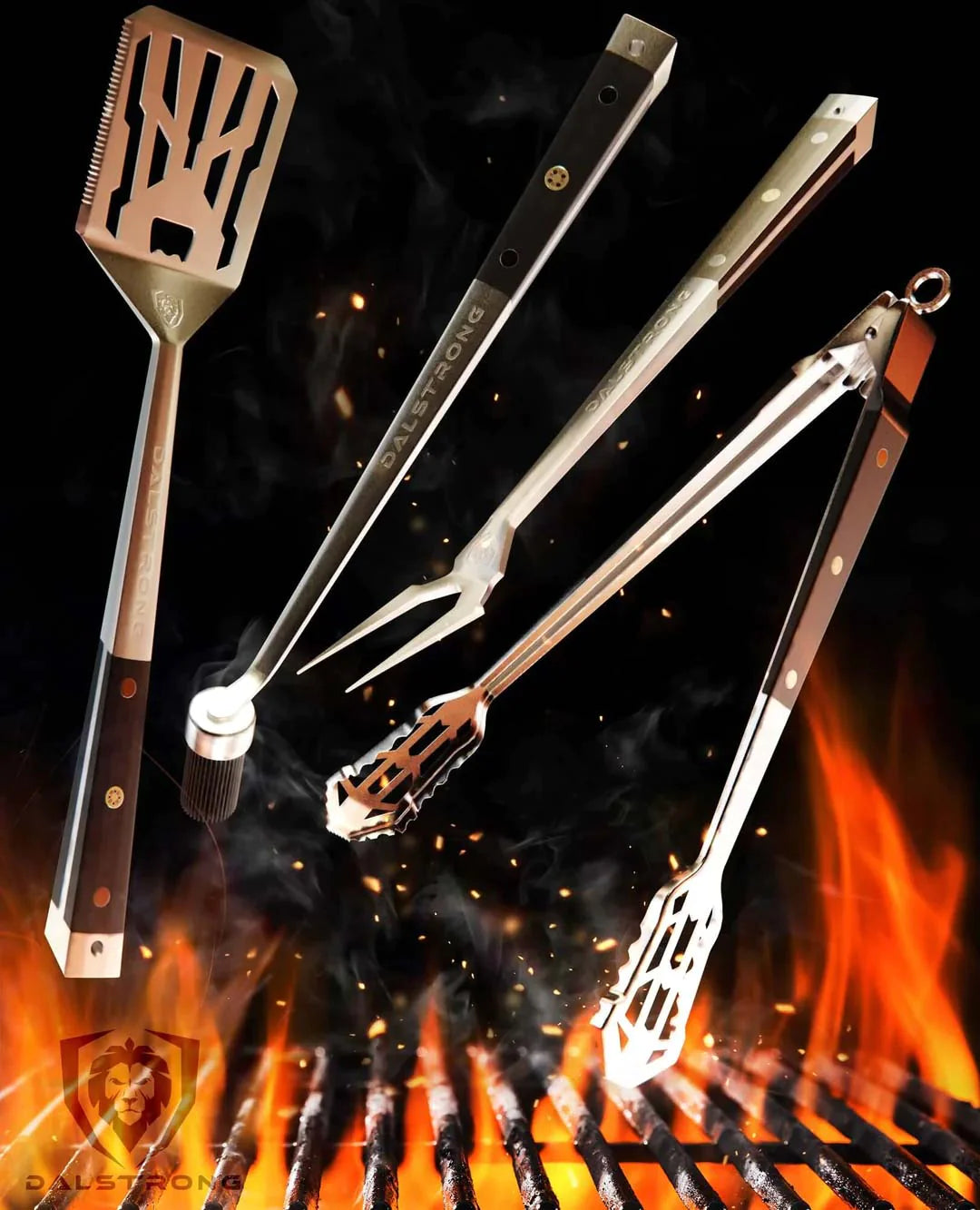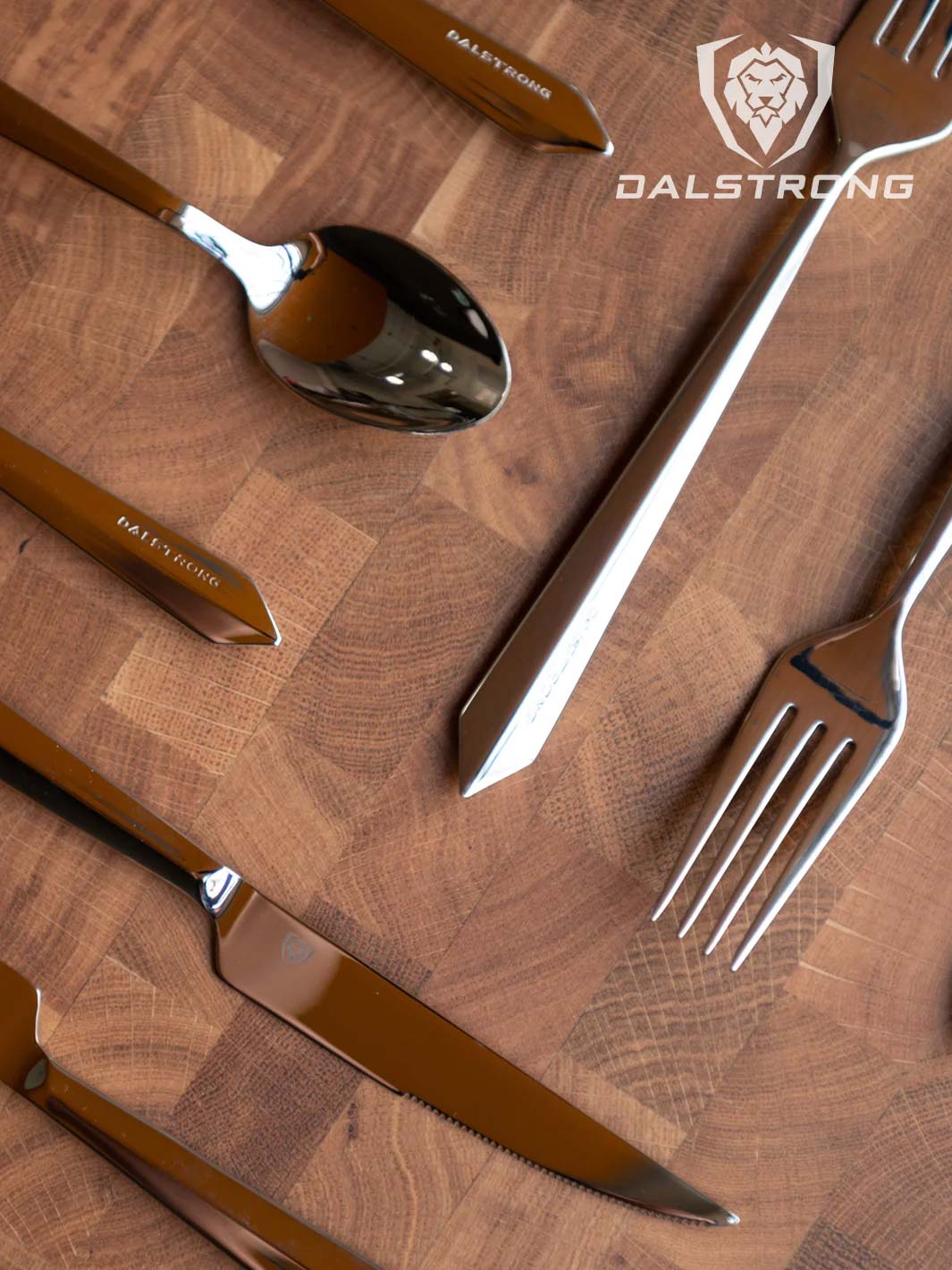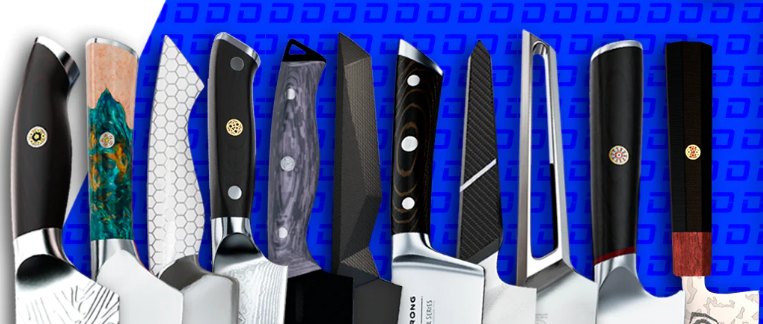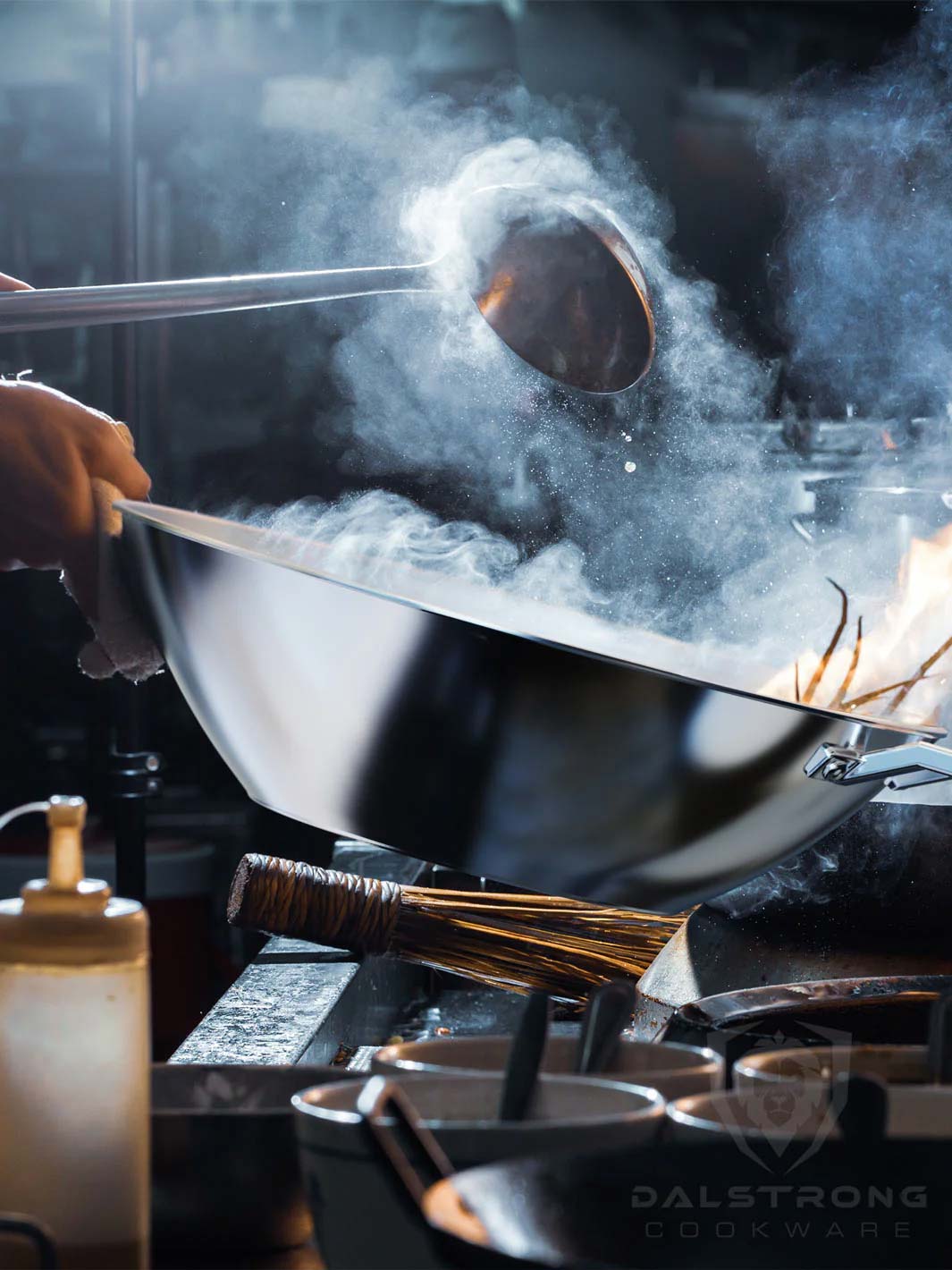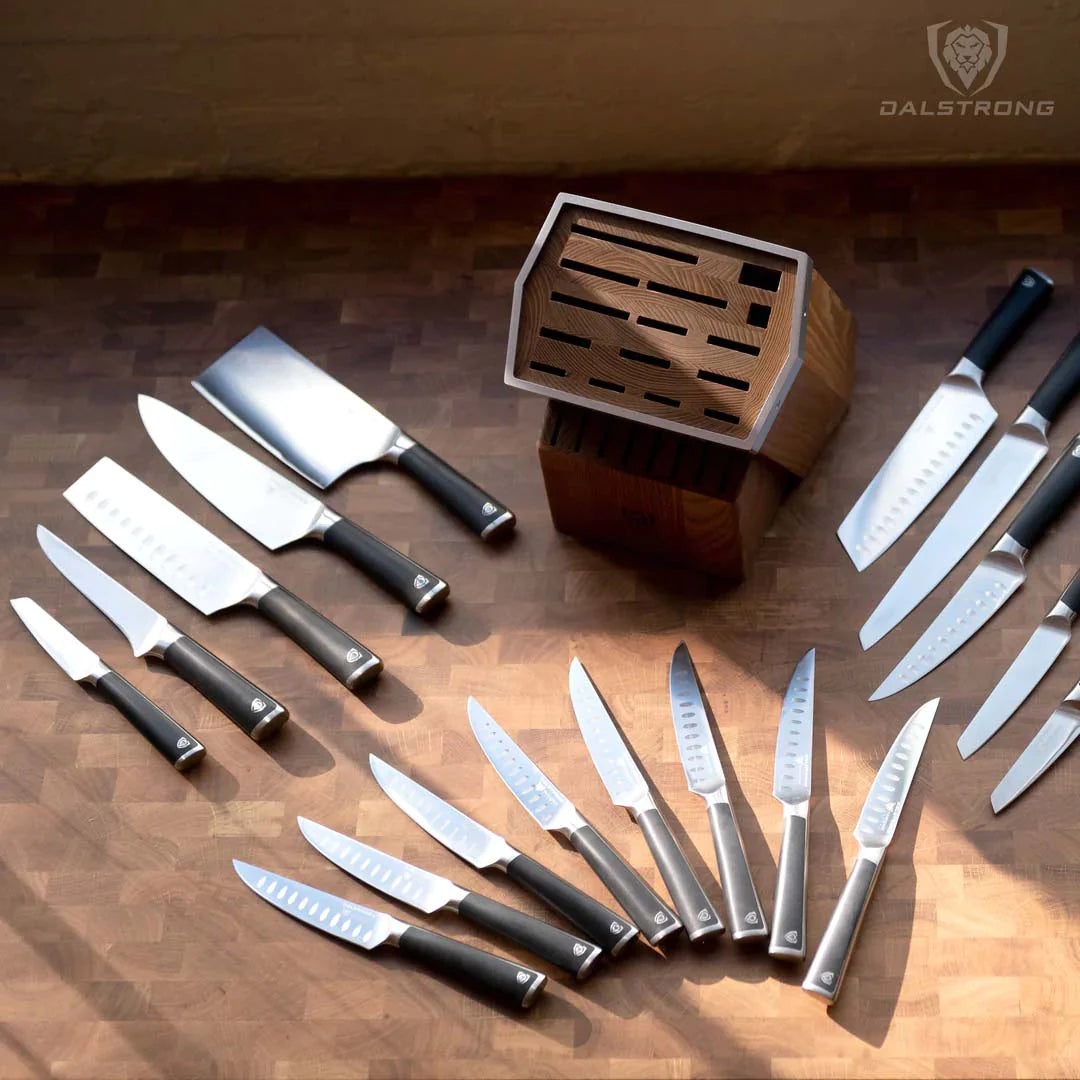Best Butcher Knife
Best Butcher Knife
- Quantum 1 Series 8.5" Butcher's Breaking Knife
- Shadow Black Series 9" BBQ Pitmaster Knife - Forked Tip & Bottle Opener
- Gladiator Series 12" Butcher's Breaking Cimitar Knife
- Shadow Black Series 10" Bull Nose Butcher Knife
- Gladiator Series 14" Extra-Long Bull Nose Butcher Knife
Being a home cook is more than just knowing your way around the condiment rack. If you feel you’ve already mastered the art of home cooking, the next step is to take even more ownership of the food preparation process by cutting your own meat on a hickory butcher block. And in order to do that effectively, you need a good butcher knife.
10'' Butcher's Breaking Knife | Gladiator Series | Dalstrong ©
But where to start? What to buy? What even is a butcher knife? Why are there so many kinds? Don’t worry -- we know it can be overwhelming. That’s why we’ve put together this nifty guide for you. By the end, you’ll come out knowing all there is to know about butcher knives -- and hopefully having picked one that suits you just right.
1. Why You Need A Good Butcher Knife
I can’t be the only person who’s ever stood in line at a butcher shop and admired the skill, dexterity, and almost balletic effortlessness with which these purveyors of meat wield their instruments, chopping and slicing and hacking into various cuts with the confident ease of a craftsman who is perfectly attuned with his tool.
You might have even caught yourself daydreaming about what a nice, relaxing job it might be -- just you and your knife slicing meat all day, far away from the tedium of office work and spreadsheets and reports. And then you realize you’ve completely zoned out, and the butcher is awaiting your order, and the people in line behind you are grumbling impatiently.
What, just me?
See, one of the main reasons why you need a butcher knife is also one of the simplest ones: it just feels good. There’s something extremely satisfying on a basic, primal level about the feeling of chopping up your own meat before preparing it for consumption. And with the chefs knife, gliding the steel blade down a piece of meat should be a breeze.
Another reason is that it simply provides you more control. When cooking, if you really want to make a dish your own, you want to be able to have full control over all of the elements you’re juggling -- why be at the mercy of someone else’s whims in regards to thickness and shape when you already know exactly what you want and exactly how you like it?
It’s not just about preference, though -- chopping meat on the spot, right before cooking, is also the safer choice when it comes to cleanliness. By using your butchering chefs knife to chop up your meat on the night you cook it, you’ll ensure that less surface area is exposed to the elements. Using the right tool for the job will always help you avoid accidents as well.
And of course, we’d be remiss to leave out the social factor: it just looks so cool. Seriously, if you’re having people over for dinner, very few things scream out “pro move” like pulling out a butcher’s knife and proceeding to chop away right in front of their eyes. It shows that you’re fully in control of the meal, and that you know exactly what you’re doing.
But of course, in order to fully look the part, you need to have the right equipment. And in order to find it, you have to know what to look for. So let’s talk about it.
Pro Tip:
Ensure to maintain your blade's edge retention by learning how to sharpen your knife.
2. What Makes A Good Butcher Knife
In the case of butcher knives, there are a few things that set it apart from a steak knife or a common chef’s knife. The main difference is in the design of the blade: since it’s meant to be used with raw meat, it’s not serrated like a lot of steak knives are. Instead, it has a curved blade that is designed specifically to “slice” through meat rather than tear through it. It’s also considerably heavier to facilitate the process of cutting through sinew, cartilage, skin, and sometimes even bone.
Now that we’ve established that these kitchen knives serve an important function, let’s talk about what we want to be on the lookout for when picking the best butcher knife.
The Handle
Firstly, we want to take a look at the butcher knife handles. Given its usage, it makes perfect sense to pay special attention to the blade itself (we’ll get to it in a moment), but the handle is an often overlooked, yet critically important, part of the knife. And given that it’s the part of the knife you’ll interact with directly, it’s extremely important that you choose wisely.
Comfort
With this in mind, the first factor to look at is comfort. You’ll be working with the kitchen knife quite a bit, so you want the handle to feel right. Look for an ergonomic design that fits the contours of your hands, so it won’t wear you down after a little while.
Safety
Safety is also important; when working with raw meat, things might get slippery and wet. You don’t want a handle that will slip easily from your grasp, potentially resulting in an accident. You might want to look for a handle that features a textured surface to avoid slipping. Knife handles with a high nylon content offer a superior grip in these circumstances.
The Blade
Another highly important aspect is the blade itself. It’s important to ensure that the blade is made of high carbon steel. And no, your butcher knife doesn't need to have a granton edge. This aids in its durability and strength, and will ensure that your tool is sharp enough for the use you’re going to give it. Keep in mind that your trusted butcher knife needs to be able to get the job done in conditions that are sometimes demanding. Some people are set on an ontario knife, but at the end of the day its the cutting performance and edge retention that are extremely important and you can't go wrong with a high quality stainless steel blade like we offer at Dalstrong.
While it’s common for professional butcher knives to have a sharp blade made of high carbon stainless steel, there are also blades made of stamped steel. These offer a bit more flexibility and are more affordable, but there is a bit of trade-off when it comes to durability and strength.
Blade length is important and you might want to look into a full tang blade. A full tang blade is what we call butcher knives that are one solid piece, with a handle attachment pinned onto the base of the blade. This brings more power and stability to your use of the knife.
Design
And of course, when picking the best butcher knife, the aesthetics of the object are also an important aspect. After all, you don’t want an object that is simply there to fulfill a practical role: you want to feel like you own a piece of fine craftsmanship. Dalstrong pride themselves on modern craftmanship, for those that want something different to a traditional hickory butcher knife. We did talk about wanting to impress your friends with your butchery skills. So don’t be afraid to pick a knife that not only feels right, but looks right as well.
3. Different Types of Butcher Knives
Shadow Black Series Cleaver Knife 9"
This is a good question and it makes complete sense that a newbie to this topic would ask this. After all, there is a bit of conflicting information out there, and several types of kitchen knives that present themselves as all-in-one solutions. Truthfully, there are a few different types of butcher knives. Here are a few examples you’ll find in addition to the modern butcher knife.
I wanted to start with the iconic meat cleaver, which is what a lot of people probably default to when they think of “butcher knives”. At least that’s the case for me, having been instilled into my brain by every pop-culture depiction of a butcher shop ever. You’ll still find them as part of the average knife set.
The meat cleaver is a large knife that has a blade with a very distinctive, rectangular hatchet shape. This large (often) stainless steel blade provides a good amount of heft for applying brute force to a tough task, allowing for its use in splitting up bones and cutting up thick pieces of meat.
The Traditional Butcher Knife
Also known as the “English butcher knife,” this was the reigning butcher tool for many years. It’s still quite ubiquitous, though the appearance of several other specialized tools pushed it out of center stage a bit. It features a wide blade with a small curve at the tip. It is very much a “jack of all trades,” as it can be used to cut meat and other cutting tasks.
The Breaking Knife
A breaking knife is a type of butcher knife that is specifically used for cutting large sections of meat into smaller cuts. Its size and shape (particularly the long, curved blade) make it easy to achieve a clean cut when slicing a large piece of meat. Because of their small size, they’re also quite useful in trimming fat off a cut.
Next we have the boning knife. Would you care to guess what it’s used for? You got it: it’s used to get the bone out of the piece of meat. You can find straight boning knives as well as curved boning knives; the latter is preferred in most knife sets for its versatility, since it can also be used for skinning, trimming, and slicing of small pieces. The straight butcher knife, meanwhile, is a little more one-dimensional in its uses.
Those were a few different types of butcher knives you’re likely to find out there, and they’d make a great addition to your kitchen knives. For our picks, we focused on the modern butcher knife, which can be used in a number of ways. Whether you’re purchasing them individually or as part of a knife set, you’re going to want to go with one of our picks for the best butcher knife.
In addition to www.Dalstrong.com, you can check out our butcher knife reviews and price on Amazon.
Learn more about where Dalstrong Knives are manufactured here!
4. Best Butcher Knife
Here’s a collection of excellent, high-end to help you slice, chop, and cut meat.
1. Quantum 1 Series 8.5" Butcher's Breaking Knife
The future of meat carving has arrived. Engineered to handle even the largest game meats at the speed of light, the Quantum 1 Series Butcher & Breaking Knife brings the cutting edge of blade technology to one of our most advanced knives. The scimitar-like curve of the blade — hand-sharpened to 8-12 degrees— creates the leverage you need to complete cuts in one seamless motion.
Carve through flesh, cartilage, sinew, and fat at warp speeds, enhanced further with the Nova Prime blade pattern that reduces drag and boosts efficiency. Crafted with extremely durable BD1N-X steel, you can trust that your blade has what it takes to conquer new galaxies of flavor.
To ensure optimum maneuverability on every culinary expedition, the Dragon Skin G10 carbon-fiber handle adds sleek style and ergonomic handling, while remaining nearly impervious to the galactic rigors of heat, cold, and moisture.
Pros:
- Beautiful design and engraving.
- Extremely powerful, sharp carbon steel blade.
- Ergonomic handle with non-stick grip.
Cons:
- Price point may be a bit high for casual home chefs.
- The stylish blade design might be more than some butchers prefer.
2. Shadow Black Series 9" BBQ Pitmaster Knife - Forked Tip & Bottle Opener
You want to talk about your visually striking products? How about this beautiful 9” butcher knife that isn’t just an impressive tool for butchery, but also features a convenient bottle opener as part of its body? That’s right, you get to open your drink and slice your protein with the same convenient tool.
Designed from the ground up to be as sleek, aggressive and muscular looking as it is effective, the Shadow Black Series is sure to deliver the highest levels of satisfaction during your culinary journey. Striking from every angle, the unique handle geometry (inspired by the F-117 Nighthawk Stealth Fighter) features sharp, aerodynamic lines that cut the air and tuck snugly into your palm
Pros:
- Precision forged, ultra sharp, wear-resistant, single-piece, high carbon 7CR17MOV-X vacuum treated steel at 58 Rockwell
- The edge is painstakingly hand sharpened to 16-18° per side, maintaining the perfect balance between blade sharpness and maximum resilience
- Black, non-reflective titanium-nitride coating adds corrosion resistance, toughens the blade, enhances non-stick properties
- Tall blade height gives knuckle clearance to assist with food preparation and chopping activity
Cons:
- The unique design might be a bit much for some butchers
3. Gladiator Series 12" Butcher's Breaking Cimitar Knife
Butcher knives can range from small 5” tools all the way up to long blades such as this one, Dalstrong’s 12” butcher’s breaking cimitar knife. If you don’t know, “Cimitar” refers to a curved blade that is modeled after middle-eastern swords from centuries ago. This blade is painstakingly hand sharpened to 16-18° per side, and will slice through meat effortlessly without tearing at all.
We’ve established that this sharp blade is pretty long, but it’s also tall; this will ensure knuckle clearance to assist with food preparation and chopping. And with its military grade, triple riveted grade G10 wooden handle, you’ll find yourself wanting to use it over and over again.
Pros:
- Great for breaking down large pieces.
- Tapered design for hardness and flexibility.
- Low maintenance; cleans easily.
Cons:
- Lacks the heft that shorter, “stouter” knives possess.
4. Shadow Black Series 10" Bull Nose Butcher Knife
Here’s another handsome number, this time from Dalstrong’s Shadow Black series. This 10” bull nose butcher knife is covered in an elegant black, non-reflective titanium-nitride coating to ensure durability (it’s more resistive to corrosion) as well as enhancing its non-stick properties. It’s also just extremely cool-looking, which is no small thing.
The shape of its tip (the “bull nose”) gives the knife more length on the edge for longer, cleaner cuts, and also comes in handy when it comes to skinning and trimming fat. Its sharp blade is made of precision forged, ultra-sharp, wear-resistant, single-piece, high carbon ThyssenKrupp German steel.
Pros:
- Sleek elegant black design.
- Very useful for skinning as well as trimming fat.
- Added chromium for stain resistance.
Cons:
- Some chefs prefer a non matte finish.
5. Gladiator Series 14" Extra-Long Bull Nose Butcher Knife
We wrap up our list with this extremely impressive ultra-large 14” butcher knife. If you’re in the market for a powerful carbon steel knife that cuts through meat like butter, you don’t need to go any further; this magnificent implement will break down large pieces as well as serving as a slicing and carving tool thanks to its bull nose tip which adds an extra dimension to the straight butcher knife.
With a polished spine for a comfortable grip, as well as a stainless steel second bolster, you’ll be able to wield this sword without experiencing the type of fatigue you’d expect from such a large piece. It cuts like butter and handles extremely smoothly.
Pros:
- Large size makes it a great breaking and butchering knife.
- High carbon German ThyssenKrupp steel at 56+ Rockwell.
- Stainless steel second bolster (end cap).
Cons:
- At 14”, it might be too large for some home cooks.
5. What is the best way to use a butcher’s knife?
 Gladiator Series R Meat Cleaver 9" with Stand
Gladiator Series R Meat Cleaver 9" with Stand
We’ve already discussed that there are several types of butcher knives, and that they each have their own quirks and serve different purposes. Whether it’s a cimeter knife, a meat cleaver, an ontario knife, a breaking knife, or one of the multitask knives we discussed above, there are a few common concepts that carry over for all of them.
Regardless of blade length, it’s extremely important to exercise caution, this goes for everything from small steak knives to 14'' butcher knives. We don’t want a happy occasion -- like the maiden voyage of your brand new butcher knife -- to be marred by bodily injury. Be very careful as you’re getting to know your new tool, and you become acquainted with its quirks. A good butcher knife should be intuitive, and holding it should feel like second nature.
The most common way of holding a butcher knife is using a method called the “pinch grip”. You “pinch” the base of the sharp blade with your finger and your thumb. You could also hold the handle firmly and curl your index finger all the way around in order to protect it. Use what feels most comfortable and natural to you while also being mindful of safety.
Generally, the tip of the steel blade is very useful for getting in between the meat and the skin, and then as you make your way into that area you can use the curved portion to separate them more. You can use the full length of the blade to make longer slices. In addition to this, you can use the curved part of the blade to rotate and cut around bone.
--
There you have it. We’ve talked about the different types of butcher knives, their different uses, why you should get one, and what the best choices are. We’ve set you on a path to be the ultimate meat master among your circle of friends, as you dazzle them with your expert skills the next time they come over.
What else do you need? We recommend expanding your collection by purchasing a knife set that includes a meat cleaver as well as other more specialized types of butcher knives (it’s always better to have a few specialized tools to help out). Also look into getting a cutting board if you don’t have one already, and a nice-looking apron. Now you’re ready. Go forth and butcher.
CHECK OUT DALSTRONG BUTCHER KNIVES TODAY
You can also check in with our Expert Knife Finder Quiz and get specific recommendations based on your needs.
Written by Jorge Farah
Born on the coast of Colombia and based in Buenos Aires, Jorge is a cooking enthusiast and kitchenware obsessive with a tremendous amount of opinions.














































































































































































































